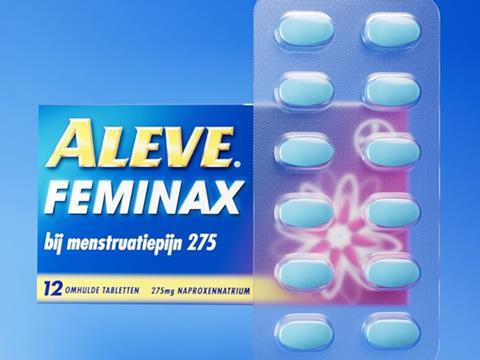
German pharmaceutical giant Bayer recently announced the launch of a ‘first-of-its-kind’ PET blister pack for its Aleve drug brand. The company says that its new solution creates 38% less carbon emissions than conventional alternatives, alongside other impressive attributes. How innovative is this product really, and can we expect it to overtake hard-to-recycle solutions? Chris Padain, Vice President and Head of Design and Packaging at Bayer’s Consumer Health Division, tells us more.
Please could you introduce this latest solution to our audience? In your view, what makes it so innovative, and why should people be excited about it?
Bayer is introducing an innovative PET blister packaging for Aleve debuting in the Netherlands, the first of its kind in the Consumer Health Industry. This packaging is important because it significantly reduces the environmental impact, achieving a 38% reduction in carbon emissions, 78% less water usage and 53% less land use per unit.
People should be excited about this because blister packaging, which is typically made from PVC plastic backed with aluminum is a critical sustainability challenge. Solving this is a great step forward, not just for Bayer and achieving our sustainability goals, but for the entire industry.
From an innovation perspective, we needed a solution that not only delivered on our sustainability goals, but also met our targets for feasibility (encompassing; technical, compliance quality and safety), viability, and consumer desirability. Overcoming these challenges was a multi-year process.
The launch of this product is the result of a multi-year collaboration between Bayer and Liveo Research. Take us behind the scenes here – what did the R&D process look like, and what were some of the key problems that had to be overcome?
You really can’t overstate how important it is to have a strong partner to accomplish something like this – particularly to be the first to do it. We were very fortunate to have that partner in Liveo Research.
When we set out on this journey, we wanted to deliver a more sustainable blister pack, and to maintain the consumer experience. We explored a variety of Partners and material Technology approaches, ultimately settling on Liveo’s PET film technology.
Some of the key challenges stemmed from trying to adapt this material, particularly as a mono-material, to the regulatory requirements in the healthcare industry. Ensuring compliance with quality and safety standards took some time, especially as a first-mover. Hopefully, with this step, the path becomes easier for others, and we start to see a bigger impact beyond just one product launch.
The most critical challenge, however, was achieving the right consumer experience when using the product. Everyone is familiar with foil-backed blister packs, and they are very easy to use.
Our desired benchmark was parity from an experience point of view, as consumer accessibility is critical for us to meet the health needs of our users. This is a high bar when you consider we need to push tablets through a plastic film. This requires significant R&D work and consumer testing, and our partnership with Livio was critical to success.
How does this new solution perform in comparison with multilayer solutions? Did any compromises have to be made in terms of functionality?
The target for this technology has always been our product portfolio that uses mono-PVC, this is our benchmark in terms of barrier functionality, where we see equivalent performance.
As mentioned, usability was our key challenge. For the Aleve product launch, we were able to avoid any significant compromises on the user experience. However, across our portfolio we have a variety of product forms and physical geometries that will push the current lidding approach, perhaps beyond its functional (usability) limits. This is where we may have to conduct further foundational R&D in order to successfully cascade PET across our relevant blister portfolio.
How was the carbon impact of this product assessed, and could you also give us some more information on lightweighting, water usage, and land usage considerations?
We see lots of claims out there around sustainability. For us, consumer trust is critical, including on claims we make about the sustainability of our products. The methodology used to calculate the 38% reduction in carbon footprint and the specific environmental benefits of using 78% less water and 53% less land is based on a comprehensive Life Cycle Assessment (LCA) approach, employing the Environmental Footprint 3.1 impact assessment method.
The LCA has been externally reviewed by an external third party. This method follows the recommended approach by the European Commission and quantifies the environmental impacts of products through a cradle-to-grave analysis, encompassing all stages in the life cycle of the packaging solutions, including the acquisition of materials, production, distribution, retail, and end-of-life stages.
What does the future hold for the product? Could you let us know more about the trial run in the Netherlands, as well as the potential journey towards full commercial scale?
The Netherlands is just the first step, we plan to scale this technology through our portfolio where it is applicable, as replacing all PVC blisters is our biggest sustainability challenge. This requires further R&D to ensure equivalent performance across different product types, however this work is already well underway.
Beyond this, we will continue to work with regulators and the recycling industry to find solutions to close the loop and make this packaging fully recyclable.
If you liked this story, you might also enjoy:
The ultimate guide to the Packaging and Packaging Waste Regulation in 2024
How are the top brands progressing on packaging sustainability?
Sustainable Innovation Report 2024: Current trends and future priorities
Everything you need to know about global plastic sustainability regulation












No comments yet